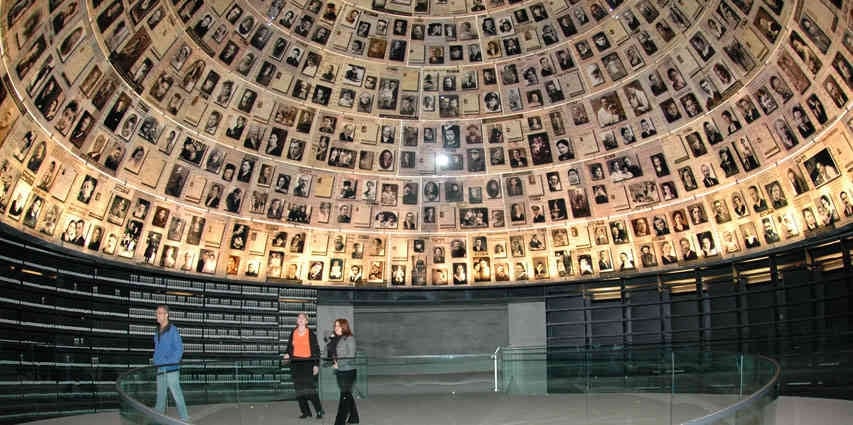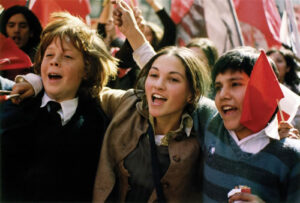
In a recent Film Studies class, we watched the Chilean drama Machuca (directed by Andrés Wood). Its representation of the contrast between naïve adolescence and the pressures of a conflict zone got me thinking about our habits of visualising peace. One of the most successful pieces of independent cinema to come out of Chile in recent years, when released in 2004 Machuca received many international accolades: the Goya Award Nomination for Best Spanish Language Film, the People’s Choice award at Vancouver Film Festival, and Directors Fortnight at the Cannes Film Festival, to name a few. These awards pay tribute to a film that is deeply entrenched in Chilean history. In Chile itself, it became one of the top five movies of 2004, and it also reached a wide international audience.
Synopsis
The film follows two Chilean boys who live completely different lives; Gonzalo, a child growing up in an affluent family, whose mother is having an affair with a powerful and wealthy man; and Pedro Machuca, who lives in a slum and is brought to Gonzalo’s Catholic private school as part of a controversial social charity project run by the priest. Despite their differences, the boys bond over their mutual love of Western comics and the problems within their families, as many young teenagers do. They also bond over their mutual adolescent passion for Machuca’s cousin, Silvana.
Their budding friendship is set against the backdrop of not just class tensions but also the Chilean coup of 1973. Political tensions worm their way into the movie as Gonzalo’s father argues that they should move to Europe and the three children sell flags at protests on both sides, seemingly oblivious to the nature of the protests they are butting their way into. The coming of age film remains rooted in bitter reality and ends with the bloody takeover of Pinochet; Gonzalo’s school is overrun by the military, who impose discipline on the children, and Gonzalo can only watch whilst Machuca’s family is beaten and taken away.
There is an insinuation that Machuca’s drunkard father’s prediction has come true: the soldiers let Gonzalo go when they see his expensive clothes and, with his mother’s privileged position, he will finish his education and become a prominent figure in Chilean society, whilst Machuca will spend his life cleaning toilets, as his father declared. In other words, the film’s director Wood has chosen to highlight class tensions through the lens of children.
Context
1973, the year in which the film is set, was arguably one of the most important years in recent Chilean history. On September 11th a military coup deposed Allende’s socialist government and replaced it with a right wing dictatorship that would last until 1989. This was partially provoked by economic struggle under Allende, leading to social unrest. Reflecting this, the film documents a specific protest by the women of Chile that occurred during this year. [1]
Like many dictatorships, Pinochet’s regime conducted continuous human rights abuses. El museo de la memoria y los derechos humanos (Museum of Memory and Human Rights) in Santiago, only opened in 2010, estimates that around 1900 victims were killed whilst a total of 28,500 people survived political prison during this time.[2]
What can we learn?
The film Machuca struck me as relevant to peace-building on three levels. Firstly, it is loosely autobiographical, based on Wood’s time at the school St George’s in Santiago. Wood has highlighted that he interviewed the priest and some of his old classmates as part of research for the film. As a result, the film can be interpreted as revealing a dialogue on the way children view conflict. Despite the film’s tragic ending, there are also pockets of peace throughout, such as when Gonzalo begins letting Machuca copy his homework, since he struggles, and the boys have sleepovers and share their homes with each other. In these moments of friendship, the backdrop (whether it is the dilapidated slum or Gonzalo’s well-to-do neighbourhood) becomes broadly irrelevant. [3] For me, this provides commentary on the power that children and childhood can have in rising above social divisions and conflict and in being actively involved in peace-building. Thinking about Gonzalo as a character, he will grow up and never forget his tumultuous friendship with Machuca, potentially leading him to be a force for social change in Chile.

On a second level, the film was released in 2004, at a time when Chile was entrenched in the re-building of a historical memory of Pinochet’s regime. Therefore, in its contemporaneous setting, the film slots directly into a part of the reconstruction of forgotten Chilean history, particularly due to its autobiographical slant, by providing a historical narrative of the dictatorship through a mainstream media. Considering its widespread popularity, Machuca can be seen as broadening this conversation about the past.
On a third level, Wood has highlighted the fact that cinema itself was a highly censored art form under Pinochet that has only begun to be rejuvenated in the late 20th and 21st century. Therefore, once again, Machuca becomes an active part of reconstruction for Chile. Its international success means it helps Chilean media once again gain recognition on the world stage, following its forced hiatus.
Therefore, below the surface of the film, much can be discovered about the political climate of Chile in a time of post-conflict recovery and reconstruction.
What do you think?
- Are films about children more impactful than films about adults when it comes to understanding conflict and visualising peace?
- What connections does this film draw between direct violence, structural violence and cultural violence?
- What other media have shaped our understanding of conflict, post-conflict recovery and peace-building in Chile?
- What does cinema offer in particular in helping us visualise war and peace from fresh perspectives?
If you enjoyed this item in our museum….
You might also enjoy ‘How do children visualize: ‘Life after Conflict’?, ‘Screenplay: No Love Lost’, and ‘Colombia: The long road to peace’.
Christy Forshaw, May 2023
[1] A deeper dive into 20th century Chilean history can be found here: https://www.britannica.com/place/Chile/The-military-dictatorship-from-1973
[2] More on Chile’s museum of historical memory and efforts of reconstruction can be found here: https://web.museodelamemoria.cl/wp-content/files_mf/1561474936autoguiado.pdf
[3] More on Andres Wood’s directorial intentions can be found here: https://www.jstor.org/stable/pdf/41689883.pdf?refreqid=excelsior%3A80d81692d3bc13949b31b3afce471bbc&ab_segments=&origin=&initiator=